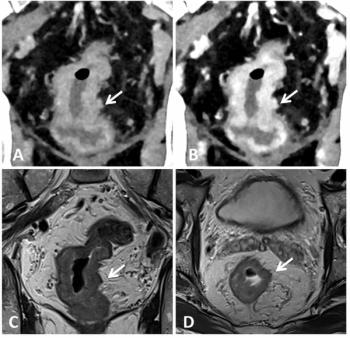
Vendors make cardiac scans easy to read
Junior high school student with proper training could read certain cardiac CT studies
The article in the July issue of Diagnostic Imaging, "ACC exec: Cards must lead drive to better imaging quality," page 9, prompted me to write this response.
CT and MR images are so spectacularly accurate when generated correctly that all of us from the cardiology and radiology communities are very excited to see the modalities become commonplace and affordable. These tools will soon become commodities whose quality is guaranteed by a competitive marketplace. This process is out of physicians' hands, however, since it is the manufacturers who are furiously driving the technology advances that result in ever-improving CT and MR image fidelity.
Producing good photographs used to require expertise in film, darkroom techniques, and camera mechanics. Now, thanks to digital image technology in consumer cameras, nearly anyone can take excellent photographs and also use new photo applications that were previously the domain of professional photographers and publishers.
CT is on the same track. In the four years I have been teaching CT to cardiologists and radiologists, scanner output has gone from "difficult-to-analyze" to "images that speak for themselves."
I firmly believe that I could teach science-oriented junior high school students to skillfully navigate contrast-injected cardiovascular volumes, to find and quantify calcified and noncalcified plaque, and to recognize motion and other CT artifacts.
What we really have to face is not the fact that reading CT images is difficult, but that reading CT images is easy and therefore does not require even a medical degree, let alone a fellowship. This reality is just around the corner.
The issue for cardiologists and radiologists is proper patient selection, so that the negative of a significant dose of radiation is balanced by the clinical value of good imagery for each patient.
Dr. Pamela S. Douglas, outgoing president of the ACC, whose comments are cited in the July article, is correct on several points:
- Case selection. As CT is new to cardiologists (and we have all seen overuse and hype of unfounded claims in every area of medical diagnostics and therapeutics), there must be standards that guide who should be scanned and how that scan should ideally be performed. The world of x-rays and tomography has been our stock and trade for the last 25 years with nuclear cardiology, echo, and direct cardiac cath. Now that CT angiography has arrived in the time of breakthroughs in drugs, devices, and prevention, we plan to take the lead. Quality and proper case selection are key.
- Site quality. Wherever CT scanners are running, they must be operated with the greatest respect for detail and safety by Level 3 certified physicians with skillfully trained and certified technologists and registered nurses. The American College of Cardiology and the American College of Radiology have addressed this issue thoroughly. I note, however, that the ACC has placed this standards bar higher than has the ACR.
- Clinical standards. Clinical trials are under way that will soon spell out the applications where CT imaging saves money and improves disease outcomes. CT will replace perfusion imaging and echocardiography in many clinical situations. Here, structural and functional information already has proven valuable, and we should not have to wait for outcomes studies in many of these situations.
- Image quality. Quality is already getting better. What to do with the information is the question. The ACC guidelines aim squarely at guaranteeing competency by requiring CME hours and mentoring by experts in both reading images and observing "live" cases. In this way, the strengths and weaknesses of CT scanning are learned, so utilization will be appropriate.
I don't believe the ACC's concern for image quality is new and that the ACR has been in this boat alone, as Dr. James P. Borgstede, immediate past board chair of the ACR, said when he commended the ACC for its "new" interest in imaging quality.
I have never known a cardiologist not passionate about image quality. I also believe that most radiologists and cardiologists find contrast-enhanced CT angiography of the heart conceptually very new and multifaceted. I believe that both radiologists and cardiologists learn it quickly and can be expert in a few months.
Radiologists do not need to step into the role of protecting patients from their cardiologists. This makes no sense and will lead to name-calling and bitterness.
I believe that radiologists need to overread cardiac CT scans for noncardiovascular findings if the full value of the study is to be obtained. The litigious nature of our medical world will require this cooperation, and it is also good medicine.
Dr. Newton teaches Level 2 and 3 multislice CT courses in Tucson and is CT imaging consultant to South Carolina Heart Center in Columbia. He can be reached at
Newsletter
Stay at the forefront of radiology with the Diagnostic Imaging newsletter, delivering the latest news, clinical insights, and imaging advancements for today’s radiologists.



























